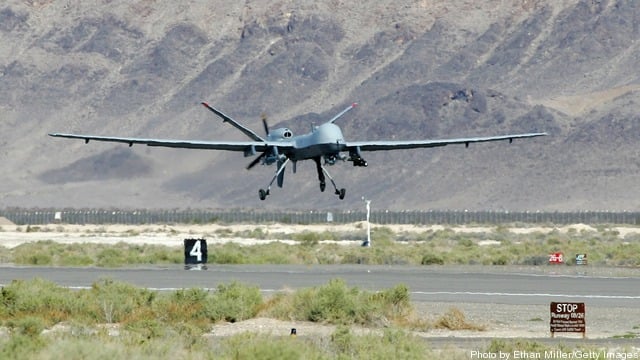FAA Takes First Step To Allow UAVs To Fly In U.S.
Posted on

WASHINGTON: The Federal Aviation Administration will publish a notice in the Federal Register on Friday asking for public comment on how it should set up six new ranges Congress has ordered the agency to create where the military and others can test technologies that might allow drones to fly safely in the same airspace used by airliners and small private planes.
The test sites are the first step toward a more dramatic mandate Congress imposed on the agency in the long-awaited FAA reauthorization bill President Obama signed Feb. 14. In a sweet Valentine to the burgeoning unmanned aerial systems industry, the new law gives the FAA three years — two less than it took Congress to pass the act – to “integrate” UAVs into the national air space, or NAS, meaning set policies that will let drones share the air with piloted aircraft.
“These test sites will help us ensure that our high safety standards are maintained as use of these aircraft becomes more widespread,” Transportation Secretary Ray LaHood said.
The test sites will be used in part to develop “sense-and-avoid” technologies as reliable as the “see-and-avoid” standard the FAA requires of manned aircraft to prevent midair collisions.
The FAA doesn’t have a lot of time to figure out where to place the test ranges and what they’ll consist of – technicalities Congress didn’t address when it required them both in the FAA bill and the fiscal 2012 defense authorization act. Under the defense bill, where House Armed Services Committee chairman Rep. Buck McKeon, R-Calif., put the UAS test range provisions when the FAA reauthorization bill seemed likely to fail once again, the deadline for opening the UAS test sites is July. Under the FAA bill, the agency has until August.
Congress didn’t give the FAA any money to fund the test sites or instructions on how to create them, other than requiring that it “take into consideration geographic and climatic diversity” as well as infrastructure and research needs and consult with NASA and the Defense Department in choosing the sites. The request for comment, though, is expected to generate plenty of suggestions.
“There clearly is a lot of congressional interest in these test sites,” said Ben Gielow, chief lobbyist for the Association of Unmanned Vehicle Systems International, which helped write the UAS provisions in the FAA act. “I am aware of at least 24 states that are interested in these test sites, but I wouldn’t be surprised if that goes to 50 by the time folks are knowledgeable and aware of these provisions.”
The armed forces, which otherwise will have to park hundreds of camera-carrying drones after the war in Afghanistan ends, are desperate for the FAA to come up with regulations and procedures that will let unarmed UAS fly routinely in the national air space – outside military ranges — for training, natural disaster response and homeland security missions. The FAA currently allows such flights only under special exemptions and grants very few. Such Certificates of Authorization generally require that UAS operators use a ground observer and a chase plane to ensure their drone doesn’t collide with or come close to civilian aircraft, making such flights expensive and cumbersome.
Potential civil and commercial drone operators from police and fire departments to agribusiness and oil pipeline companies are also eager for the FAA to figure out how to integrate UAS into the NAS, Gielow said. Under current regulations, drone flights for commercial purposes are banned and government operators have to get an FAA waiver.
“Quite frankly, the FAA has no idea how they’re going to go about selecting these test sites,” Gielow said, noting that the agency only has a few months to review public comments, set up a committee with the Pentagon and NASA, solicit applications and select winners. “Whether all that can be done by the first of July or the first of August, I don’t know.”
Subscribe to our newsletter
Promotions, new products and sales. Directly to your inbox.
